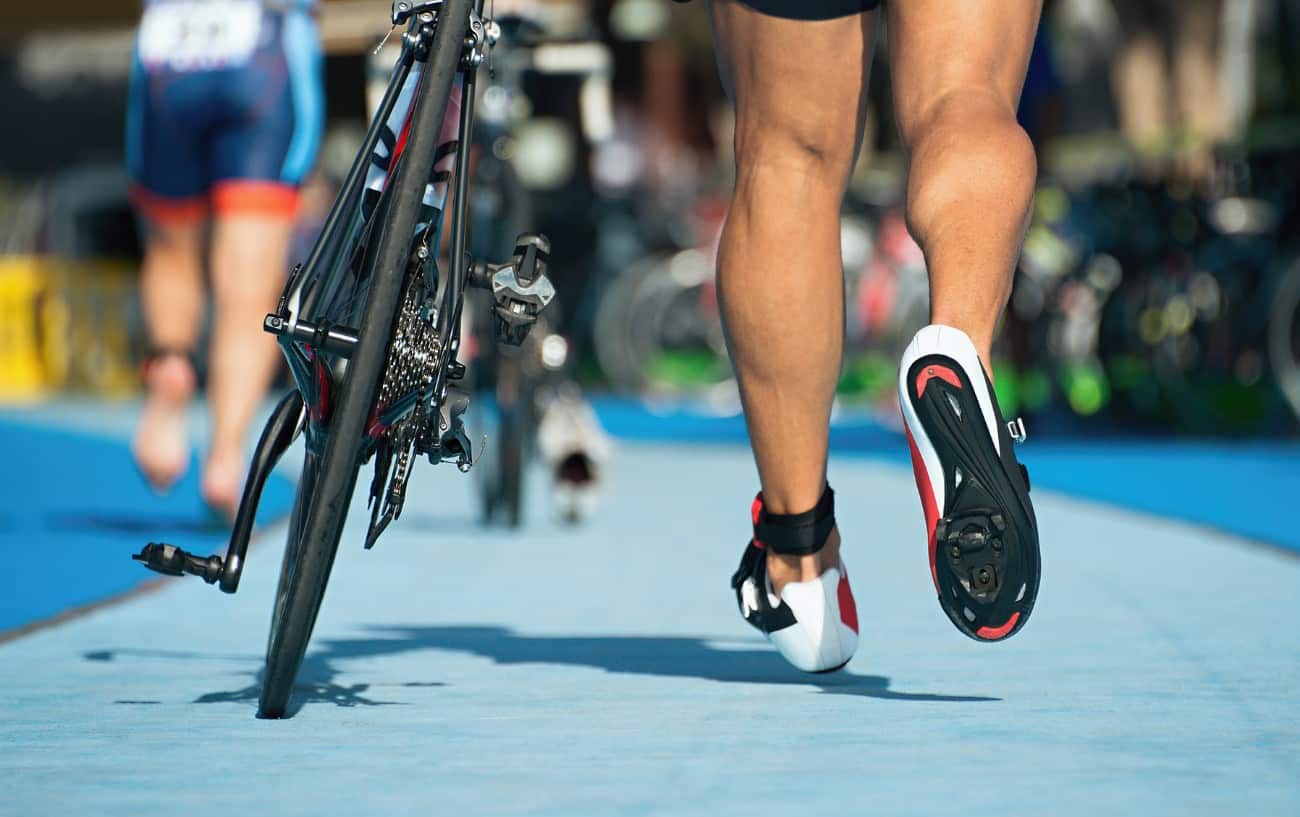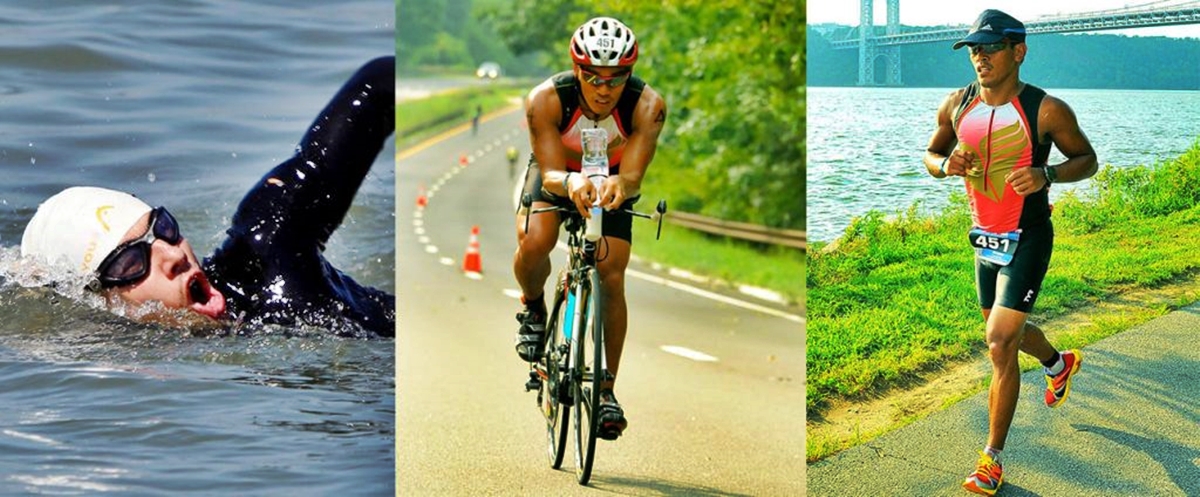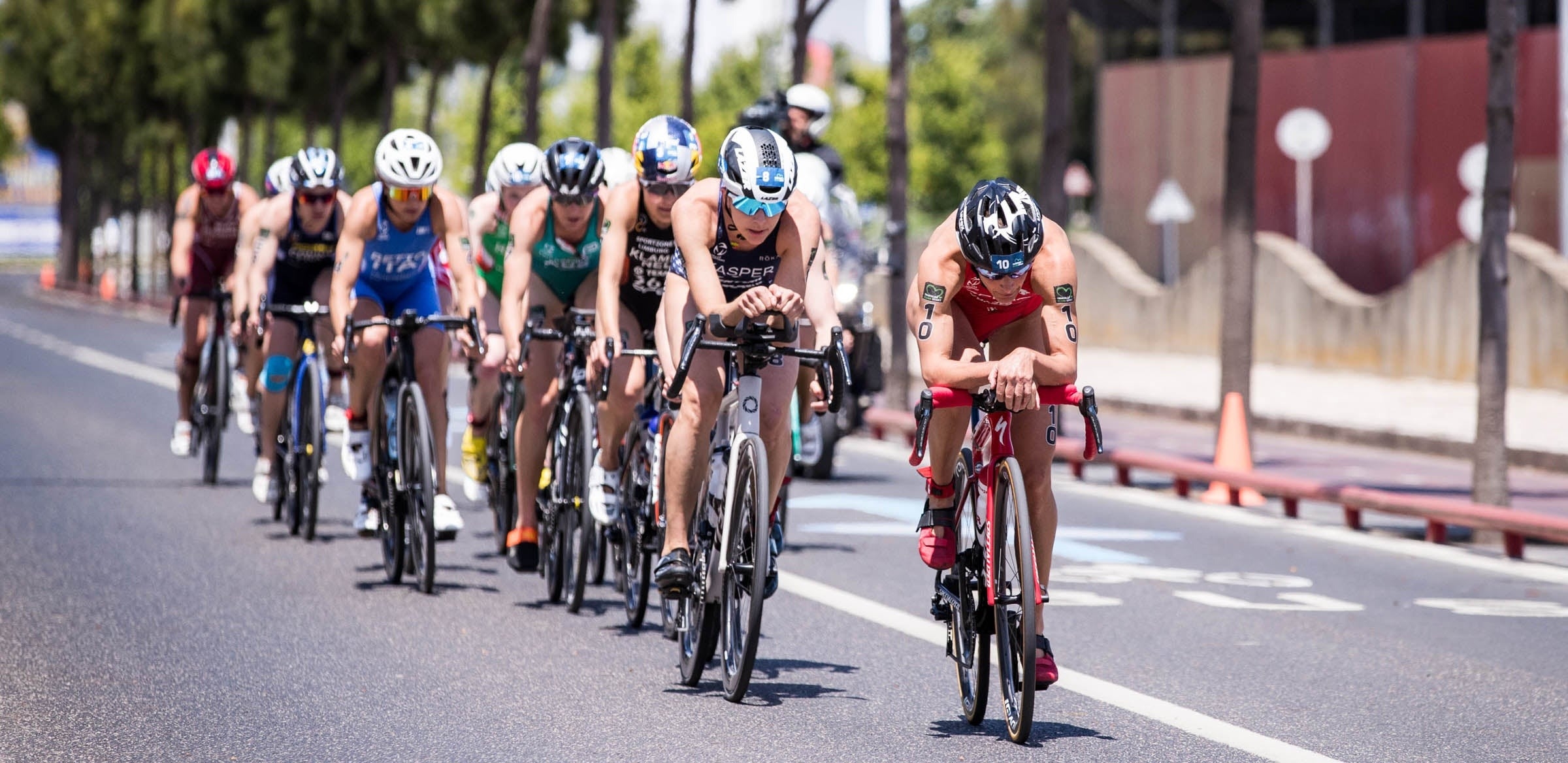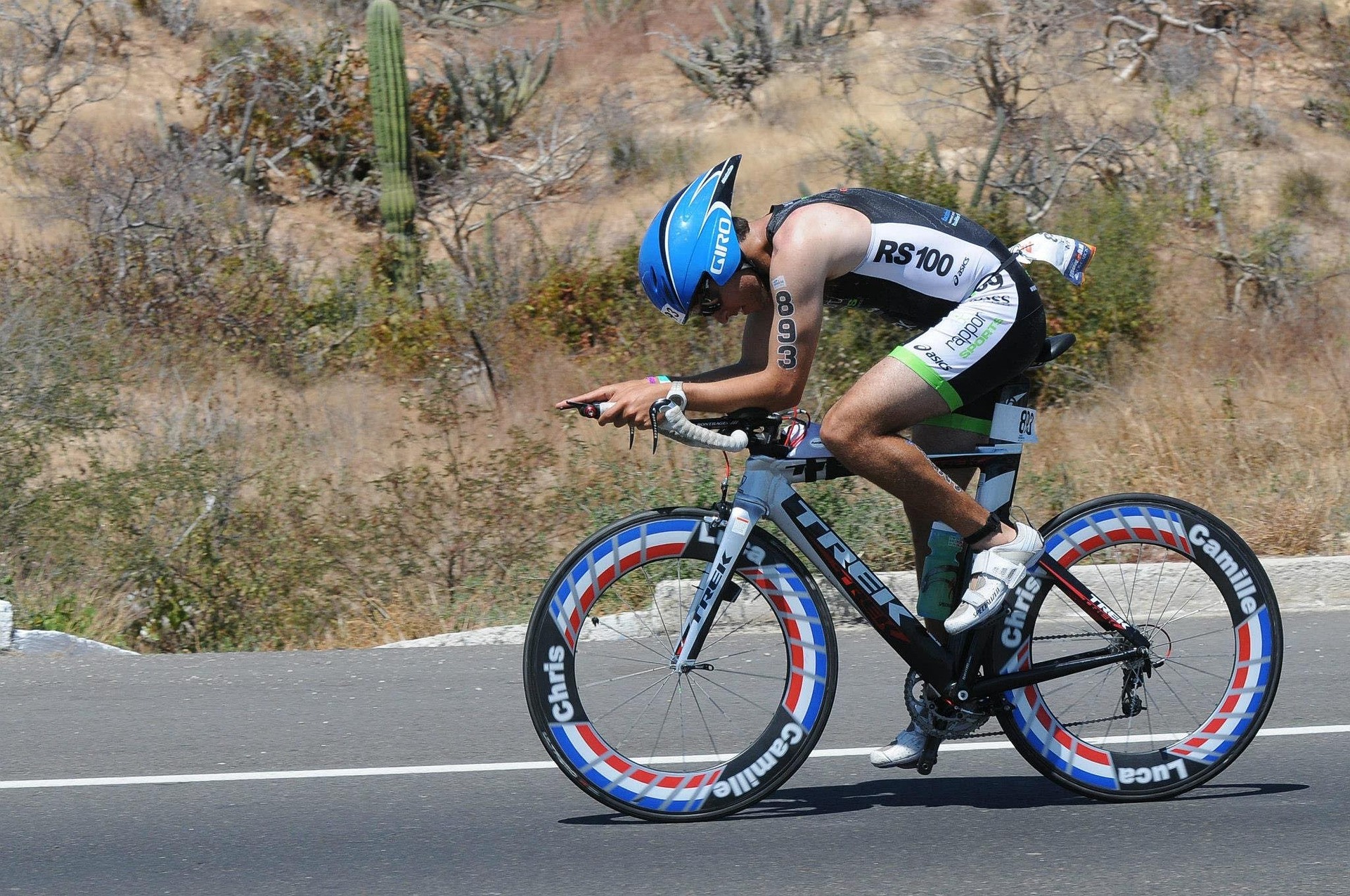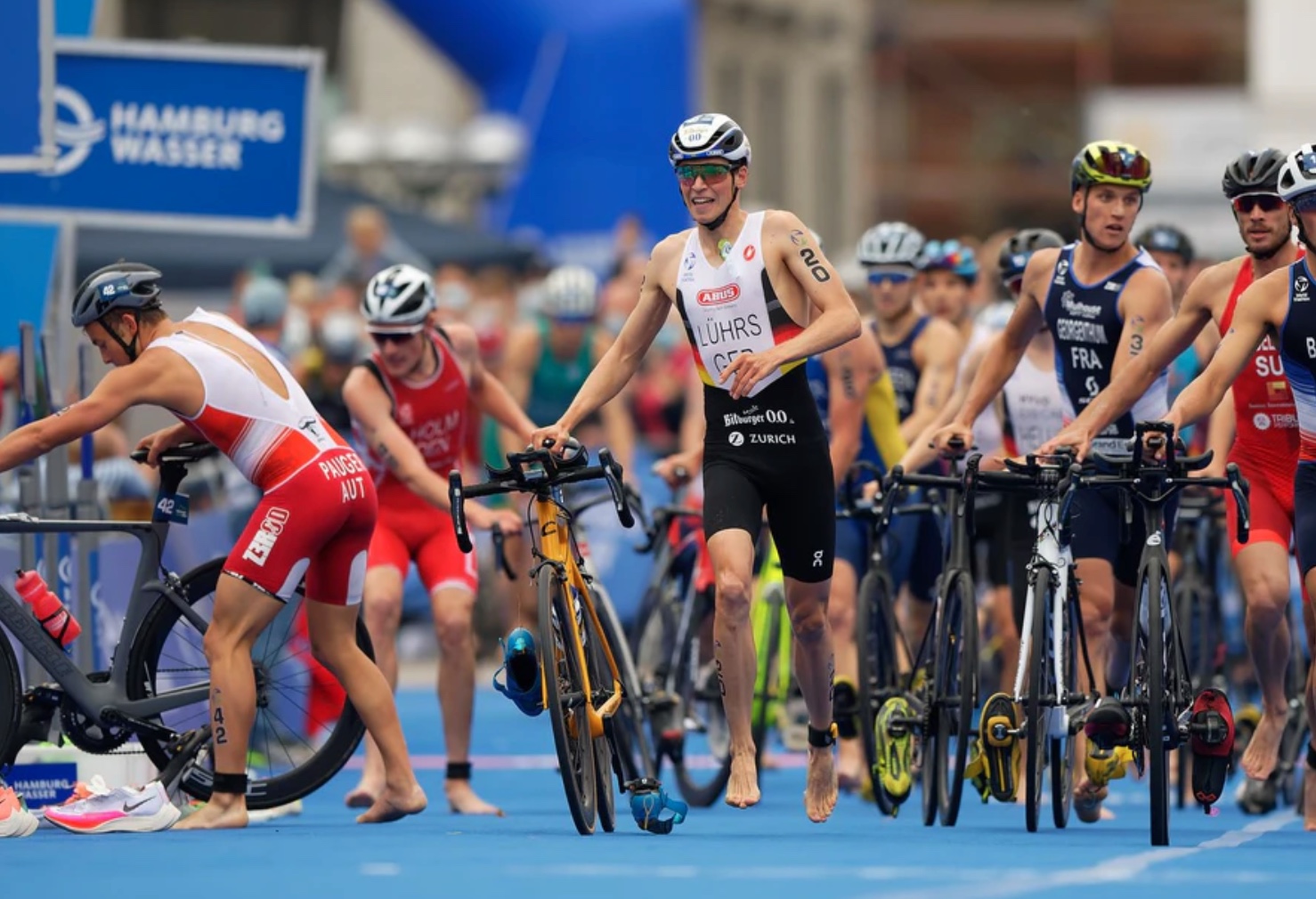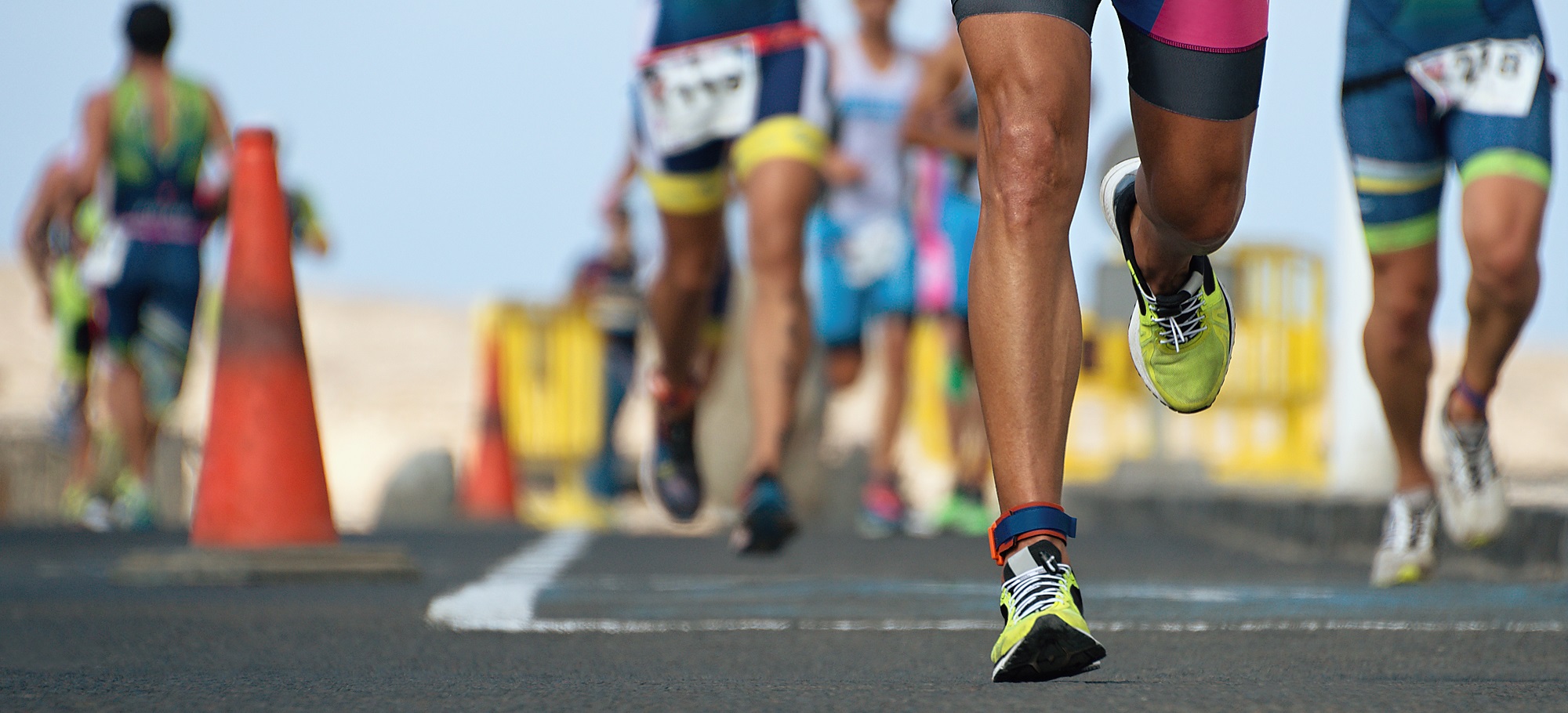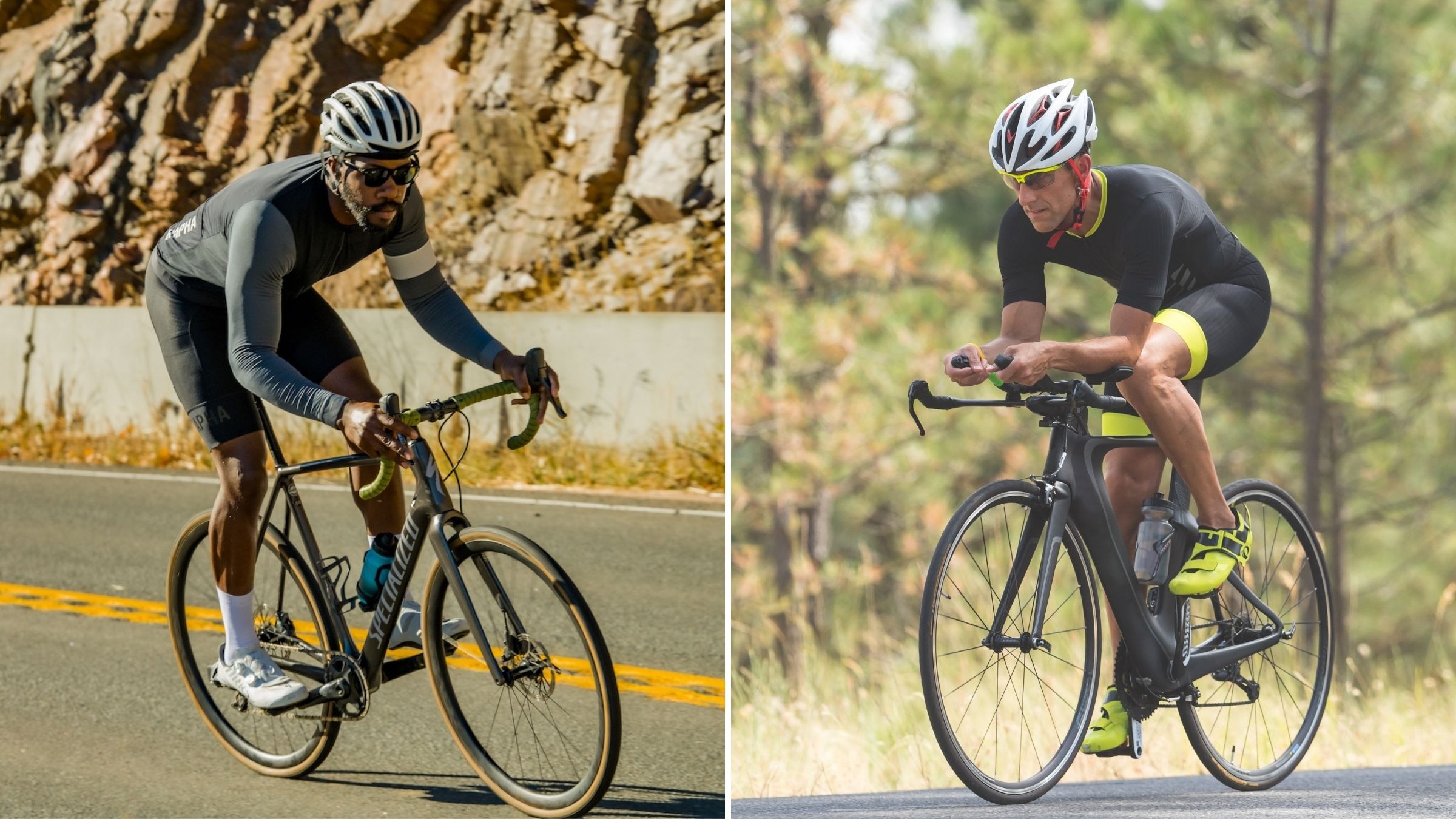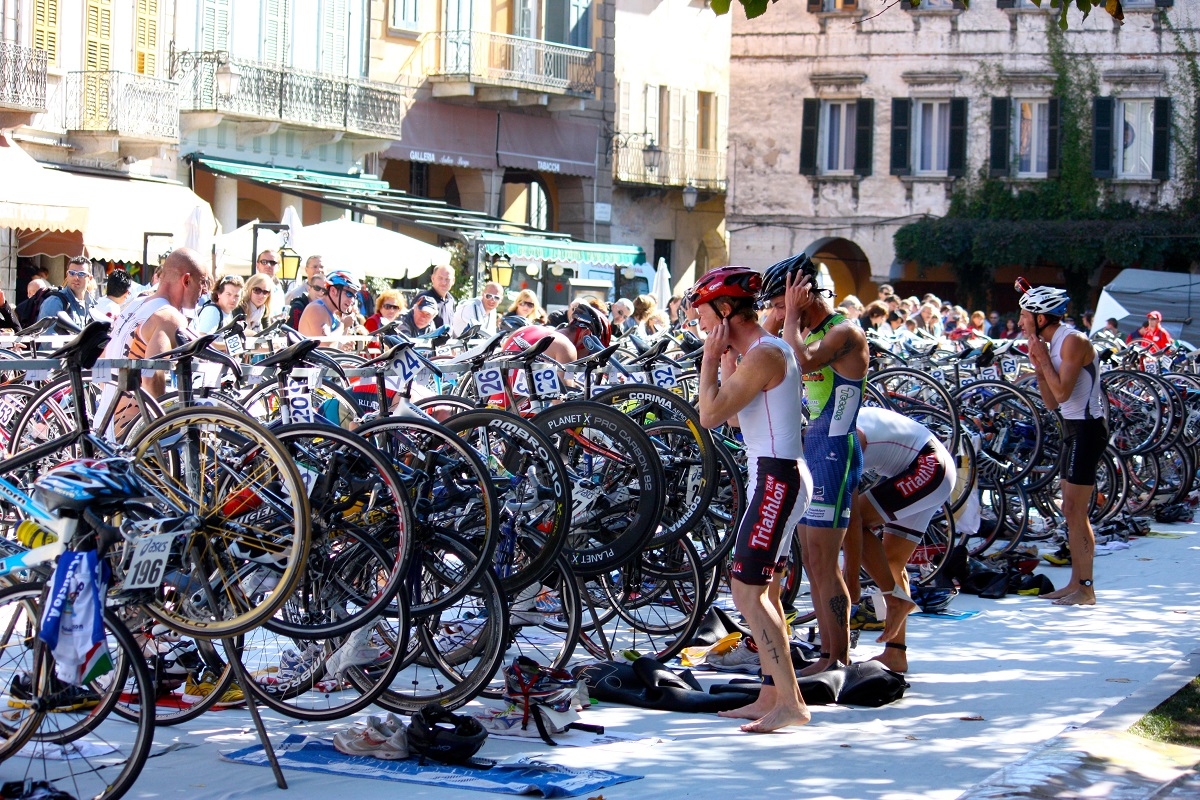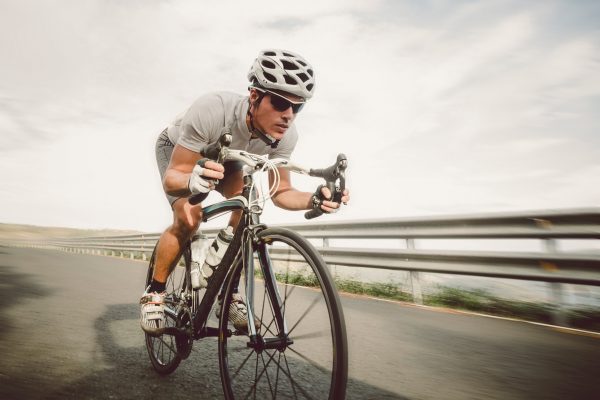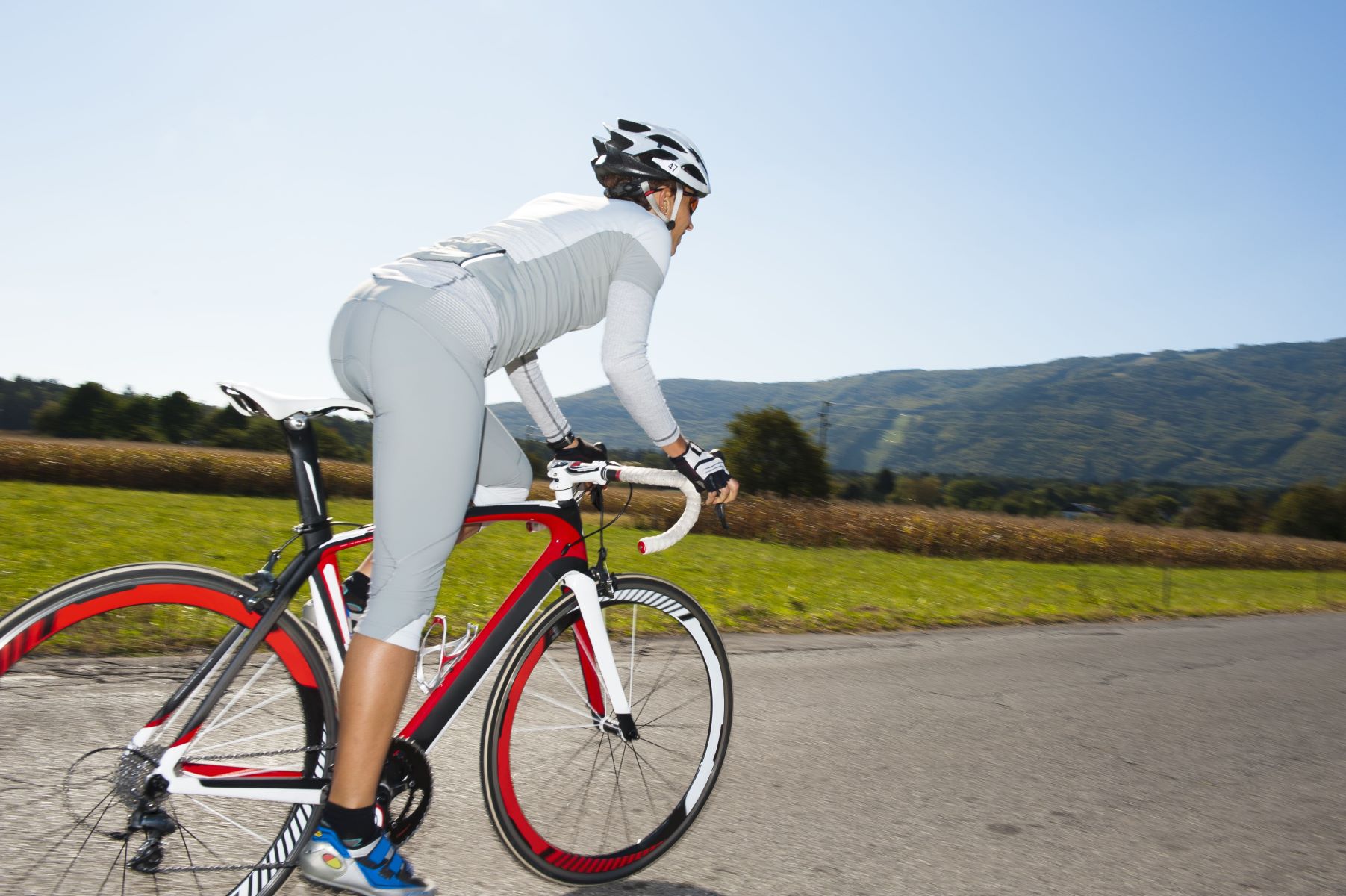

Featured
How To Sprint On A Road Bike
Modified: August 21, 2023
Learn how to sprint on a road bike with our featured guide. Enhance your cycling performance and speed up on the road.
Introduction
Sprinting on a road bike is not only exhilarating but also a great way to enhance your cycling performance. Whether you are a seasoned cyclist or a beginner looking to take your riding to the next level, incorporating sprints into your training routine can bring numerous benefits. From improving speed and power to increasing cardiovascular fitness, sprinting challenges your body in ways that traditional endurance rides may not. In this article, we will explore the various aspects of sprinting on a road bike and provide you with valuable tips and techniques to help you sprint like a pro.
When we think of sprinting, we usually picture professional cyclists battling it out in the final meters of a race. However, sprinting is not limited to high-level competition; it can be enjoyed by cyclists of all levels. Whether you are aiming to reach the finish line first or simply want to improve your overall performance on the bike, sprinting can be a valuable addition to your training regimen.
Not only does sprinting improve your speed and power, but it also contributes to enhancing your cardiovascular fitness. The explosive nature of sprinting pushes your heart rate to its maximum, challenging your cardiovascular system and helping you build endurance. Furthermore, sprinting engages different muscle groups, such as your quadriceps, hamstrings, and glutes, helping to strengthen and tone your legs.
In addition to the physical benefits, sprinting on a road bike can also provide a mental boost. The thrill of accelerating rapidly and the adrenaline rush experienced during a sprint can be incredibly rewarding and can give you a sense of achievement and motivation.
Now that we have established the numerous benefits of sprinting on a road bike, let’s delve into the specifics of how to prepare for a sprint, maintain proper body position, increase pedal cadence, shift gears effectively, and build sprinting power and endurance. We will also discuss techniques for sprinting on different terrains, common mistakes to avoid, and tips for sprinting in a group. By the end of this article, you will have a comprehensive understanding of how to sprint on a road bike and be ready to take on the road with confidence and speed!
Benefits of sprinting on a road bike
Sprinting on a road bike offers a wide range of benefits that can elevate your cycling performance and take your riding to new heights. From physical improvements to mental gains, here are some key advantages of incorporating sprinting into your training routine:
1. Improved speed and power: Sprinting is a powerful way to enhance your speed and power on the bike. By regularly practicing sprints, you can push your body to generate more force and increase your pedaling efficiency. This translates to higher speeds and improved performance, whether you’re racing or riding for personal achievement.
2. Increased cardiovascular fitness: Sprinting is a highly intense activity that puts significant demands on your cardiovascular system. As you sprint, your heart rate increases, your lungs work harder, and your body becomes more efficient at delivering oxygen to your muscles. Over time, this improves your cardiovascular fitness and helps you build endurance, making those long-distance rides feel easier.
3. Enhanced muscle strength and tone: Sprinting engages multiple muscle groups, including your quadriceps, hamstrings, glutes, and calves. As you push through each sprint, these muscles are worked to their maximum potential, leading to increased strength and a toned lower body. Additionally, the explosive nature of sprinting recruits fast-twitch muscle fibers, which are essential for generating power and improving overall muscle performance.
4. Mental boost and motivation: The adrenaline rush experienced during a sprint can have a profound impact on your mental state. The thrill of accelerating rapidly and the satisfaction of achieving high speeds can be incredibly motivating and boost your overall enjoyment of cycling. Sprints provide a new level of excitement and a fresh challenge, helping you stay engaged and motivated in your training.
5. Improved technique and body awareness: Sprinting requires a high level of focus and concentration. By practicing sprints, you can fine-tune your technique and increase your awareness of body positioning, pedal stroke efficiency, and overall bike handling. This not only benefits your sprinting ability but also carries over to other aspects of your cycling, making you a more well-rounded and confident rider.
6. Enhanced anaerobic capacity: Sprinting primarily relies on the anaerobic energy system, which provides quick bursts of intense energy without the need for oxygen. By regularly challenging your anaerobic capacity through sprinting, you can increase your body’s ability to perform at high intensities for longer durations. This can be particularly beneficial during race situations or challenging hill climbs.
These are just a few of the many benefits that sprinting on a road bike can offer. Whether you’re a competitive cyclist or a recreational rider, incorporating sprints into your training routine can help you reach your goals faster, improve your overall physical fitness, and elevate your cycling performance to new heights.
Preparing for a sprint
Before you dive headfirst into a sprint, it’s important to adequately prepare your body and mind. Here are some key steps to take in order to optimize your performance and reduce the risk of injury during a sprint:
1. Warm-up: Prior to any high-intensity activity, it’s crucial to warm up your muscles and increase your body’s core temperature. Start with a gentle aerobic warm-up, such as a 10-15 minute easy-paced ride, to gradually increase blood flow to your muscles and prepare them for the upcoming sprint. Follow this with dynamic stretches that target the lower body, focusing on the major muscle groups involved in sprinting, such as your thighs, calves, and glutes.
2. Mental preparation: Sprinting requires focus, concentration, and a strong mental mindset. Take a few moments before your sprint to visualize the process and success of the sprint. Visualize yourself accelerating smoothly and effortlessly, maintaining proper form, and crossing the finish line with power and speed. This mental preparation can enhance your confidence and reduce any pre-sprint nervousness.
3. Choose the right terrain: Sprints can be performed on various types of terrain, but it’s important to choose a suitable stretch of road or path. Look for a flat and straight section of road that allows for an uninterrupted sprint without any sharp turns or obstacles. This will ensure a safe and efficient sprinting experience.
4. Gear selection: The gear you choose for a sprint can greatly impact your performance. Opt for a gear that allows you to maintain a high cadence while still applying enough force to generate power. Experiment with different gear ratios during your training sessions to find the optimal combination that works best for your strength and pedaling style.
5. Practice proper breathing techniques: Breathing plays a crucial role in maximizing your sprinting performance. Focus on deep, rhythmic breaths to help deliver oxygen to your muscles and maintain a steady oxygen supply throughout the sprint. Avoid shallow and erratic breathing, as it can lead to decreased oxygen intake and decreased performance.
6. Ensure a secure grip: A firm and secure grip on your handlebars is essential during a sprint. Make sure your hands are positioned correctly and that you have a comfortable grip on the handlebars. This will provide stability, control, and confidence, allowing you to fully unleash your power during the sprint.
7. Start with shorter sprints: If you’re new to sprinting, it’s advisable to start with shorter sprints and gradually build up your duration and intensity over time. This gradual approach allows your body to adapt and minimizes the risk of muscle strain or injury. As you gain more experience and confidence, you can gradually increase the length and intensity of your sprints.
8. Listen to your body: Pay attention to any signs of fatigue or discomfort during and after your sprint sessions. If you feel excessive strain or pain, ease off and give your body the time it needs to recover. Overtraining and pushing beyond your limits can lead to injuries and setbacks, so it’s essential to listen to your body’s signals and adjust your training accordingly.
By following these preparation steps, you’ll set yourself up for a successful and enjoyable sprinting experience. Remember to always prioritize safety and listen to your body, allowing for gradual progress and improvement in your sprinting abilities.
Proper body position for sprinting
The right body position is crucial for maximizing your power and efficiency during a sprint on a road bike. By maintaining proper form, you can effectively transfer power from your legs to the pedals and optimize your speed. Here are some key elements to consider when it comes to body position during a sprint:
1. Upper body: Keep your upper body relaxed but engaged. Maintain a slight forward lean from your hips, allowing your chest and shoulders to be slightly lowered in a more aerodynamic position. However, avoid slouching or rounding of the back, as this can restrict your breathing and limit your power output. Engage your core muscles to provide stability and support throughout the sprint.
2. Arms and hands: Your arms should be slightly bent, with your elbows out to the sides, providing a strong and stable foundation. Keep your hands firmly but comfortably gripping the handlebars, with your fingers gently wrapped around the brake hoods. This allows you to maintain control and easily adjust your position during the sprint.
3. Head and gaze: Keep your head up and your gaze focused straight ahead. Avoid looking down at the road or your front wheel, as this can negatively affect your balance and stability. Keeping your head up allows you to maintain situational awareness and react quickly to any changes in the road or other riders around you.
4. Lower body: Position your feet in a way that ensures maximum power transfer. Generally, aim to have your feet parallel to the ground, with the balls of your feet placed on the pedals. This allows you to engage your leg muscles more effectively and generate more power with each pedal stroke. Experiment with different foot positions to find the most comfortable and efficient stance for your own body mechanics.
5. Knees and hips: While sprinting, focus on maintaining a smooth and controlled pedal stroke. Avoid excessive side-to-side movement of your knees and hips, as this can waste energy and reduce efficiency. Keep your knees tracking in a straight line and your hips stable, maximizing the power transfer from your legs to the pedals.
6. Relaxation and flexibility: While maintaining a strong and stable position is important, it’s equally important to avoid unnecessary tension in your muscles. Keep your body relaxed, particularly your arms and shoulders, to conserve energy and maintain fluid movement. Regular stretching and flexibility exercises can help improve your range of motion and minimize any tightness or discomfort during sprints.
Remember, achieving the proper body position for sprinting may require experimentation and adjustments based on your own body’s biomechanics and comfort. Take the time to practice and become familiar with your optimal position, and make any necessary tweaks to ensure you are in the best possible alignment for generating maximum power and speed.
Increasing pedal cadence
Pedal cadence, also referred to as pedal revolutions per minute (RPM), plays a crucial role in sprinting on a road bike. A higher cadence allows you to generate more power and maintain a smoother pedal stroke, which can translate into increased speed and efficiency. Here are some tips to help you increase your pedal cadence during a sprint:
1. Focus on technique: Efficient pedaling technique is key to a higher cadence. Concentrate on applying consistent pressure throughout the entire pedal stroke, both during the downstroke and the upstroke. Engage your hip flexors and hamstrings to pull up on the pedal during the upstroke, in addition to pushing down with your quads during the downstroke. This balanced application of force will help you maintain a more continuous and fluid pedal motion.
2. Practice spinning drills: Incorporate spinning drills into your training routine to improve your cadence. During these drills, aim to maintain a high RPM while pedaling on a flat road or a slight incline. Start with shorter intervals, gradually increasing the duration and intensity as you become more comfortable. Focus on maintaining a smooth and controlled rhythm, rather than simply pedaling as fast as possible.
3. Use a lower gear ratio: When practicing sprinting, opt for a lower gear ratio that allows for a higher cadence. This can help you adapt to spinning at a faster RPM. As your leg muscles become accustomed to the higher cadence, gradually increase the gear ratio over time to further challenge yourself.
4. Incorporate interval training: Interval training is an effective way to improve your cadence. During your sprint intervals, aim to increase your pedal cadence while maintaining a consistent power output. This will help train your neuromuscular system and gradually increase your ability to maintain a higher RPM during sprints. Start with shorter intervals and gradually increase the duration and intensity as your fitness improves.
5. Use a metronome or cadence sensor: Consider using a metronome or a cadence sensor to help you maintain a steady and consistent pedal cadence. Set the metronome or adjust the cadence sensor to your desired RPM, and focus on syncing your pedal strokes with the beat or the displayed cadence. This can help you develop a sense of rhythm and improve your ability to maintain a higher cadence over time.
6. Build leg strength: Strong leg muscles are essential for maintaining a higher cadence. Incorporate strength training exercises, such as squats, lunges, and leg presses, into your fitness routine to build leg strength and power. This will provide a solid foundation for pedaling at higher RPMs and enable you to generate more force with each pedal stroke.
Remember, increasing your pedal cadence takes time and practice. Be patient with yourself and gradually work towards your desired RPM. Consistency is key, so incorporate cadence-focused workouts into your training regimen and monitor your progress over time. With dedication and persistence, you will see improvements in your cadence and overall sprinting performance.
Shifting gears effectively
Proper gear selection is crucial for sprinting on a road bike. Shifting gears effectively allows you to maintain an optimal cadence and maximize power output. Here are some tips to help you shift gears efficiently during a sprint:
1. Anticipate gear changes: As you approach a sprint, anticipate when you’ll need to shift gears. This involves analyzing the road ahead, the terrain, and any potential changes in resistance or gradient. By anticipating gear changes in advance, you can shift smoothly and maintain momentum during the sprint.
2. Shift before the sprint: Ideally, shift into the appropriate gear a few seconds before the sprint begins. This ensures that you are in the right gear before you start putting in maximum effort, avoiding any disruption or loss of power during the sprint. Plan your gear selection based on the intended cadence and power output for the sprint.
3. Get to know your gears: Familiarize yourself with the gear ratios on your bike and understand how each gear feels in terms of resistance and cadence. This knowledge will help you make quick and effective gear changes during a sprint. Experiment with different gear combinations during your training rides to find the ones that work best for you.
4. Shift one gear at a time: When shifting gears during a sprint, shift one gear at a time to avoid putting excessive strain on the chain and derailleur. Rapidly shifting multiple gears at once can result in poor shifting performance and potential chain drop. Make smooth and deliberate shifts by briefly reducing pedal pressure while shifting to allow for a seamless transition.
5. Choose the right gear ratio: Selecting the appropriate gear ratio allows you to strike a balance between maintaining a high cadence and generating sufficient power during the sprint. Opt for a gear that allows you to pedal smoothly and efficiently without feeling too strained. Experiment with different gear ratios during your training sessions to find the combination that works best for your strength and cadence preference.
6. Shift on flat or slight downhill sections: If possible, try to shift gears during flat or slightly downhill sections of the sprint route. Shifting gears while maintaining a steady cadence on these sections is easier and allows you to maintain your speed and momentum as you transition into the next phase of the sprint.
7. Practice shifting under load: During your training rides, practice shifting gears under load to simulate the conditions you’ll encounter during a sprint. This helps improve your shifting technique, allowing you to make smooth and efficient gear changes even when putting in maximum effort.
8. Listen to the sound of your drivetrain: Pay attention to the sound of your drivetrain while shifting gears. A quiet and smooth shifting sound indicates that your gears are shifting properly, while any grinding or clicking noises may suggest a need for adjustments or maintenance. Regularly check your bike’s drivetrain components to ensure they are in good working condition.
By mastering the art of shifting gears effectively, you can maintain an optimal cadence, maximize power output, and ensure a smooth and efficient sprint on your road bike. Remember to practice shifting techniques during your training rides and fine-tune your gear selection based on your individual preferences and riding conditions.
Building sprinting power and endurance
Building sprinting power and endurance is a gradual process that requires focused training and consistency. Here are some key strategies to help you improve your sprinting abilities:
1. Interval training: Incorporating interval training into your cycling routine is an effective way to build sprinting power and endurance. Structured interval sessions, such as sprint intervals or short intense efforts followed by recovery periods, can help condition your body to handle high-intensity efforts and increase your sprinting capacity over time. Gradually increase the duration and intensity of your intervals as your fitness improves.
2. Strength training: Strength training exercises can significantly contribute to increased sprinting power. Focus on compound exercises that target the lower body, such as squats, lunges, and plyometric exercises. These exercises help build leg strength, explosiveness, and power output, which directly translates to improved sprinting performance. Incorporate strength training sessions into your weekly routine while allowing for adequate recovery time between workouts.
3. Hill sprints: Sprinting uphill is an excellent way to challenge your power and build endurance. Find a moderately steep hill and perform a series of short, high-intensity sprints. As your leg muscles adapt to the increased resistance, you’ll develop greater power and endurance, making flat sprints feel easier in comparison. Gradually increase the length and intensity of your hill sprints as you become more comfortable with the terrain.
4. High cadence drills: Practicing high cadence drills can help improve your leg speed and build endurance for sprinting. During these drills, aim to maintain a cadence higher than your usual comfortable pace for a prolonged period. Start with shorter intervals at a high cadence and gradually increase the duration as your muscles adapt and your pedaling efficiency improves.
5. Plyometric exercises: Plyometric exercises are explosive movements that can increase your power output for sprinting. Examples include box jumps, squat jumps, and explosive step-ups. These exercises engage fast-twitch muscle fibers and help improve speed, power, and force generation. Incorporate plyometric exercises into your strength training routine, focusing on quality and proper form rather than excessive repetitions.
6. Sprint-specific drills: Incorporate sprint-specific drills into your training to enhance sprinting technique and power. These drills can include standing starts, seated accelerations, and short bursts of maximum effort. By practicing these sprint-specific movements, you can refine your sprinting technique, develop explosive power, and simulate race-like conditions.
7. Rest and recovery: Sprinting puts significant stress on your muscles and body. Allow for proper rest and recovery between training sessions to avoid overtraining and reduce the risk of injury. Adequate rest allows your muscles to repair and rebuild, ensuring that you can push harder in your next sprint training session.
Remember, building sprinting power and endurance takes time and consistent effort. Gradually incorporate these strategies into your training routine and adjust them based on your individual fitness level and goals. By focusing on specific sprinting training, combining it with strength training, and allowing for ample recovery, you’ll begin to see improvements in your sprinting power, speed, and endurance.
Techniques for sprinting on different terrains
Sprinting on different terrains requires adaptability and the use of specific techniques to maximize your speed and power. Here are some techniques to consider for sprinting on various types of terrain:
1. Flat Road: On a flat road, focus on maintaining a high cadence and generating maximum power with each pedal stroke. Start your sprint from a rolling start and gradually increase your speed. Keep your upper body low and streamlined, shifting into a gear that allows you to maintain a fast and steady cadence. Focus on maintaining a smooth and efficient pedaling technique, with a balanced application of force throughout the entire pedal stroke.
2. Uphill: Sprinting uphill requires a combination of strength and strategy. Anticipate the hill in advance and shift into an appropriate gear before you reach the incline. When the climb begins, stay seated initially to maximize your power output. As the gradient becomes steeper, you may need to stand up and add more upper body engagement for additional power. Maintain a steady cadence and focus on keeping your momentum by accelerating over the crest of the hill.
3. Downhill: Sprinting downhill is all about maintaining control and balancing aerodynamics with speed. Position your body in a more aerodynamic posture by lowering your upper body and grabbing onto the drops of the handlebars. Focus on spinning your legs quickly to keep up with the gravitational pull and maintain a high cadence. Pay close attention to your bike handling skills and be cautious of your speed. Gradually increase your effort as you become more comfortable and confident descending at higher speeds.
4. Rolling Terrain: Sprinting on rolling terrain requires strategic pacing and the ability to conserve energy. Use the downhill sections to build momentum and increase your speed. As you approach the next uphill section, shift into an appropriate gear and transition smoothly from the descent to the climb while maintaining a steady cadence. Instead of going all-out on every rise, gauge your effort and concentrate on maintaining consistent power output throughout the rolling terrain to ensure you have energy left for subsequent sprints or challenging sections.
5. Technical Sections: When sprinting through technical sections, such as narrow roads, tight corners, or uneven terrain, focus on maintaining control and stability. Slow down slightly before entering the section to assess the road conditions and any potential hazards. Keep your hands firmly gripping the handlebars and your body centered over the bike. Focus on smooth pedal strokes and minimize sudden movements or changes in speed that could compromise your balance and control. Maintain a high level of focus and react quickly to any unexpected obstacles or changes in the terrain.
6. Tailwind/Headwind: Adjust your sprinting strategy based on the wind conditions. In a tailwind, take advantage of the wind’s assistance by maintaining a fast cadence and focusing on generating maximum power. Use your aerodynamic position to your advantage and let the tailwind propel you forward. In a headwind, maintain a low and streamlined position to minimize wind resistance. Focus on maintaining a steady cadence and conserving energy by pacing yourself strategically to overcome the wind resistance.
Applying these techniques to suit the different terrain conditions will help you optimize your speed, power, and control during sprints. Practice these techniques during your training rides to enhance your sprinting abilities and become a more adaptable and versatile sprinter.
Common mistakes to avoid while sprinting
Sprinting on a road bike can be exhilarating, but it’s important to be mindful of common mistakes that can hinder your performance and potentially lead to injury. By avoiding these common errors, you can improve your sprinting technique and maximize your speed and power output. Here are some mistakes to steer clear of:
1. Poor body position: One of the most common mistakes during sprinting is maintaining improper body position. Slouching or arching your back, dropping your head, or having tense shoulders can negatively affect your aerodynamics and limit your power output. Focus on keeping your upper body relaxed yet engaged, maintaining a slight forward lean from your hips, and keeping your chest open to allow for efficient breathing.
2. Inconsistent pedal stroke: A smooth and consistent pedal stroke is crucial for efficient sprinting. Many riders make the mistake of applying variable pressure on the pedals, resulting in wasted energy and an uneven power output. Concentrate on maintaining a balanced application of force throughout the entire pedal stroke, from the downstroke to the upstroke, to ensure a fluid and efficient pedaling motion.
3. Overgripping the handlebars: Holding onto the handlebars too tightly can lead to unnecessary tension in your upper body and restrict your freedom of movement. This can hinder your ability to generate power and maintain stability during a sprint. Aim for a firm but relaxed grip on the handlebars, allowing your arms, wrists, and shoulders to remain loose and flexible.
4. Starting too early: Timing is crucial in sprinting, and starting too early can leave you exhausted before reaching the finish line. It’s essential to gauge your effort and make sure you have enough energy reserved for the final push. Practice your timing during training sessions and aim to maximize your acceleration without peaking too soon.
5. Incorrect gear selection: Choosing the wrong gear can significantly impact your sprinting performance. Shifting into a gear that is too heavy can lead to a sluggish start and waste valuable energy, while a gear that is too light may result in quick acceleration but limited top-end speed. Experiment with different gear ratios during your training to find the optimal combination that suits your strength and cadence preference.
6. Lack of focus and concentration: Sprinting requires maximum effort and concentration. It’s common for riders to lose focus and let their minds wander during a sprint, which can affect performance and lead to mistakes. Practice developing mental resilience, focusing on maintaining a strong and determined mindset throughout the sprint. Concentrate on your technique, breathing, and maintaining a smooth pedaling rhythm.
7. Neglecting recovery and rest: Sprinting is a high-intensity activity that puts significant strain on your muscles and body. Failing to prioritize recovery and rest can lead to fatigue, muscle imbalances, and increased risk of injury. Allow ample time for recovery between sprinting sessions and incorporate rest days into your training program to ensure your muscles can repair and rebuild.
8. Ignoring bike maintenance: Neglecting proper bike maintenance can impact your sprinting performance. Regularly check and maintain your bike’s drivetrain, brakes, and tires to ensure they are in optimal working condition. A well-tuned bike will provide smoother shifting, better power transfer, and increased confidence during sprints.
By avoiding these common mistakes, you can enhance your sprinting technique, improve your performance, and reduce the risk of injury during your sprints. Focus on maintaining proper body position, pedaling efficiency, and mental concentration to sprint with power, speed, and precision.
Tips for sprinting in a group
Sprinting in a group adds an extra layer of complexity to your sprinting experience. To ensure a safe and successful sprint in a group setting, it’s important to consider the dynamics and work together with other riders. Here are some valuable tips to keep in mind while sprinting in a group:
1. Maintain situational awareness: Pay attention to your surroundings and the positioning of other riders in the group. Be aware of their movements and anticipate any changes in pace or direction. Keeping a keen eye on the riders around you will help you position yourself strategically and react quickly during the sprint.
2. Communicate and signal: Clear communication is crucial during a group sprint. Use hand signals, verbal cues, or other agreed-upon methods to indicate your intentions and make other riders aware of your position or next move. Signaling your intentions helps prevent collisions and ensures a smoother and safer sprint for everyone involved.
3. Position yourself well: Positioning is key to a successful sprint in a group. Ensure you are in a good position before the sprint, ideally near the front of the group or on the wheel of a strong lead-out rider. This allows you to conserve energy and have a clear line of sight ahead. Anticipate the forthcoming sprint, and if needed, make gradual movements to find the best position, all while being mindful of the surrounding riders.
4. Draft effectively: Utilize the draft to your advantage during the sprint. Position yourself closely behind another rider or in their slipstream to reduce wind resistance and save energy. As the sprint intensifies, maintain your position in the draft until you are ready to make your move and unleash your sprint. Be aware that sudden movements or changes in speed may affect riders following closely behind you.
5. Timing is crucial: Proper timing is essential when sprinting in a group. Gauge your effort and adjust your timing based on the overall dynamics of the group. Avoid starting your sprint too early or getting boxed in by other riders. Assess the speed and position of the riders around you, and wait for the opportune moment to launch your sprint and accelerate to the finish line.
6. Be predictable: Consistency and predictability are vital while sprinting in a group. Maintain a steady line and avoid sudden changes in direction or speed that could surprise or disrupt other riders. By being predictable, you can enhance safety and create a smoother sprinting experience for everyone in the group.
7. Respect other riders: Show respect and consideration for other riders during the sprint. Avoid aggressive or dangerous maneuvers that could compromise the safety of others. Sprinting in a group requires cooperation and awareness of each other’s presence. Treat fellow riders with courtesy and cooperation to foster a positive and safe sprinting environment.
8. Practice group sprints: Regularly participate in group rides or training sessions where you can practice and refine your group sprinting skills. Simulating race-like scenarios and working with other riders in a controlled environment can help you become more comfortable and confident in sprinting with a group.
By following these tips, you can navigate the unique challenges of sprinting in a group and enjoy a safer and more satisfying sprinting experience. Communication, positioning, timing, and mutual respect are the keys to successful group sprints, allowing you to harness the collective energy and competitive spirit of the group to achieve your sprinting goals.
Conclusion
Sprinting on a road bike is a thrilling and challenging aspect of cycling that can elevate your performance to new heights. By incorporating the techniques and strategies outlined in this article, you can enhance your sprinting abilities, improve your speed and power, and achieve greater success on the road. From preparing for a sprint and maintaining proper body position to increasing your pedal cadence and shifting gears effectively, each aspect of sprinting contributes to your overall performance.
Remember to be patient with yourself and allow time for practice and refinement. Building sprinting power and endurance requires dedication, consistency, and a focus on both physical and mental aspects of performance. Emphasize proper technique, listen to your body, and rest when needed to avoid burnout and reduce the risk of injury.
Whether you’re sprinting on flat roads, tackling challenging uphill sections, or navigating rolling terrain, adjusting your technique to suit different terrains is crucial. Understanding the specific techniques for each type of terrain and adapting your approach accordingly will help you maintain efficiency, speed, and control during your sprints.
Additionally, when sprinting in a group, clear communication, situational awareness, and mutual respect are key. By working together with other riders and maintaining a smooth and predictable sprint, you can ensure a safer and more enjoyable experience for everyone involved.
In conclusion, sprinting on a road bike is a dynamic and exhilarating aspect of cycling that offers numerous physical and mental benefits. By implementing the tips and techniques outlined in this article, you can improve your sprinting abilities, enhance your performance, and take your cycling to new heights. So, gear up, practice, and unleash your power and speed as you master the art of sprinting on a road bike!
